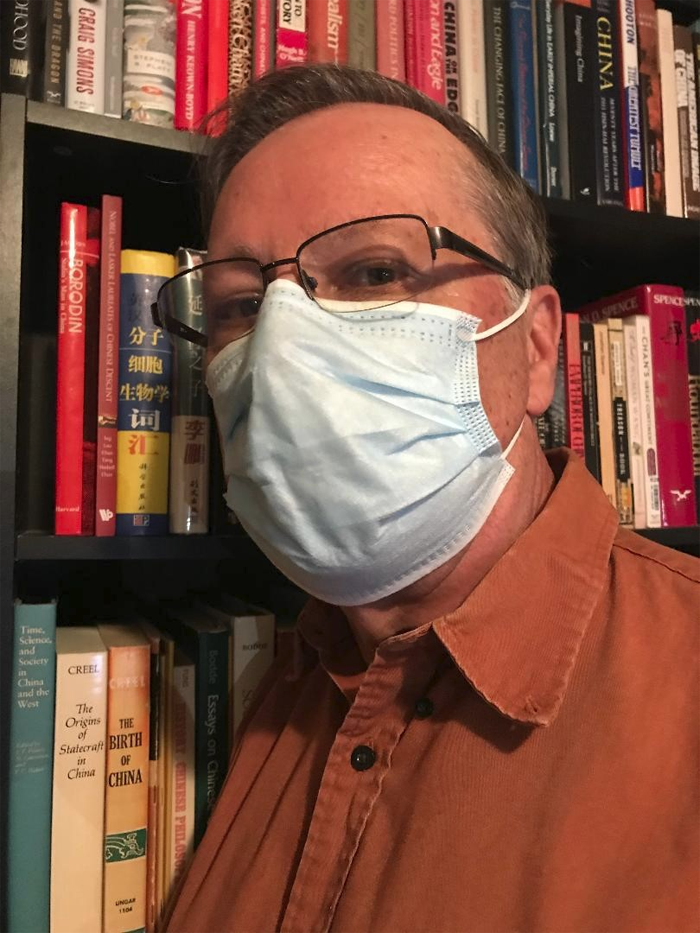
By JOHN RICHARD SCHROCK
When the initial pandemic outbreak occurred over a year ago, it was expected that the COVID-19 coronavirus would be similar to the 2003 SARS coronavirus. That meant many general hygiene measures were needed: handwashing, cleaning of doorknobs and tables, limiting handshakes or other body contact, etc. By mid-2020, it became obvious that transmission by small invisible droplets in the air was a major threat. And now we have solid data that aerosols are the primary mode of infection.
Some folks assume that we wear masks to mainly protect ourselves from viruses in the air. That error was clear when one Senator argued that folks who get vaccinated should be rewarded by not having to wear a mask anymore. But the mask is not just for protecting us alone. Nor is it a 50-50 benefit. The mask is much more important to protect others.
There is an imbalance between incoming and outgoing air. If you are a silent carrier, your mask being close around your mouth and nose will catch much of those microscopic virus-laden droplets you breathe out. Far fewer will make it through. Once outside in the air, aerosols spread out and are generally diluted. In still air, being twice as far from a person will drop the concentration 1/4; three times further away will drop concentrations 1/9th. Being outside can literally take your breath away, so being outside is so much safer than being in a room with stagnant air. But talking, coughing and singing face-to-face delivers more concentrated streams of infected aerosols.
When a person wears a mask, it filters their breath at its origin and it collects much of their possibly infected aerosols. Simply: “My mask protects you. Your mask protects me.”
There is solid data showing that from 30 to 50 percent of persons who transmit this virus have no symptoms at the time. And those who do become sick were spreading the virus two or three days before they ever developed symptoms.
And we now know that our current vaccines are really effective in preventing hospitalization and life-threatening cases. But they do not prevent a mild case. And we do not yet know the extent to which vaccinated persons with these mild cases can spread the virus.
Some folks with seasonal allergies have discovered that this spring, their allergies have gone away due to wearing a mask. And they intend to wear a face mask each pollen season from now on. During the record freeze in the Midwest earlier this year, many folks found the face masks provided welcome warmth and prevented a frozen nose and chapped lips.
I had spent a semester teaching in Asia during the winter in 2012. When the pandemic arrived, I merely reached for the masks I had brought back. Everyone wears face masks in the winter in the crowded cities in Japan, China, South Korea, Singapore, etc.
This last winter, the effectiveness of this Asian custom was proven in the United States. Tests from patients suffering respiratory problems were sent in and analyzed. “The CDC Influenza SARS-CoV-2 (Flu SC2) Multiplex Assay is a real-time reverse-transcription polymerase chain reaction (RT-PCR) test that detects and differentiates RNA from SARS-CoV-2, influenza A virus, and influenza B virus in upper or lower respiratory specimens.” Lynnette Brammer, the head of the Centers for Disease Control and Prevention’s Domestic Influenza Surveillance team stated: “Normally, this time of year, we’d be running 20 to 30 percent positive.” Instead only 0.3 percent of tests were positive. Masks and social distancing have worked to nearly eliminate flu!
Researchers from both the Smithsonian and the National Institute for Standards and Technology conducted research into the effectiveness of various masks, finding cotton better than nylon. But most masks—if they cover nose and mouth and prevent leaks to the sides—are effective. Best by far are N95s.
These medical grade masks are critical in working with hazardous materials and in hospital ICUs with contagious patients. The N95 filtration material was invented and patented in 1995 by a Peter Tsai, an immigrant from Taiwan.
Older folks like me remember the “Lone Ranger” ending (referring to a different mask). But for our youth, the answer to “who was that masked man?” is simple: he is someone who cares about others.
. . .
John Richard Schrock has trained biology teachers for more than 30 years in Kansas. He also has lectured at 27 universities in 20 trips to China. He holds the distinction of “Faculty Emeritus” at Emporia State University.





